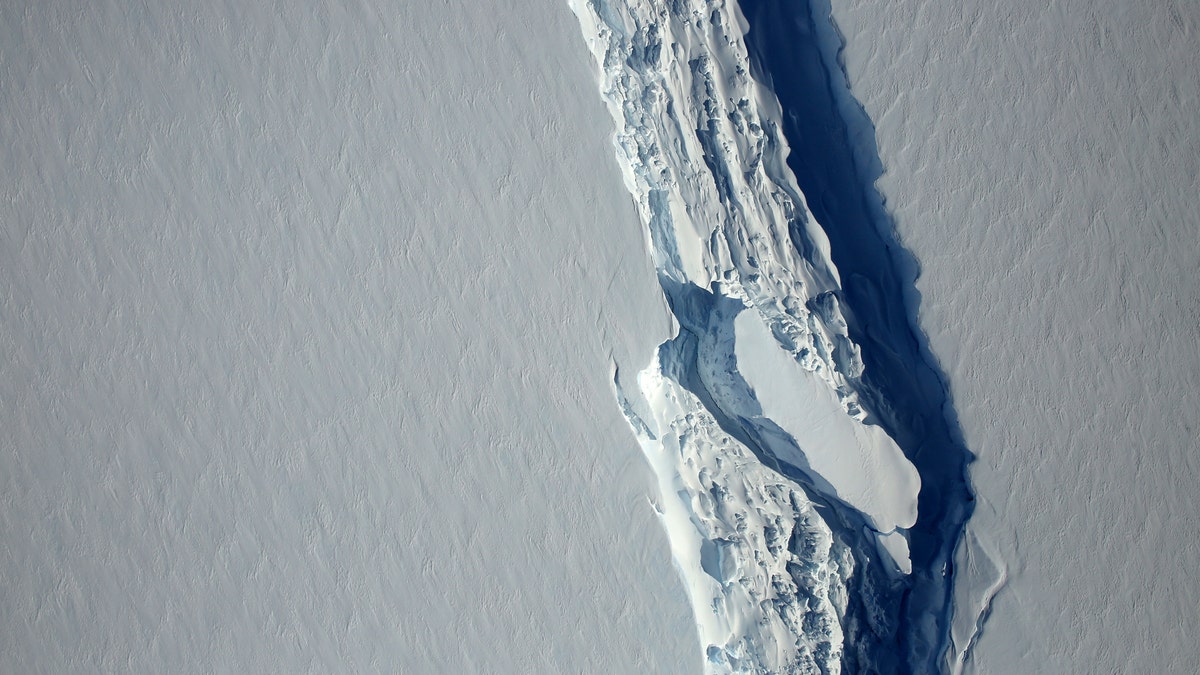
File photo - An aerial view of the rift in the Larsen C seen in an image from the Digital Mapping System over the Antarctica Peninsula, Antarctica, on November 10, 2016. (NASA's Goddard Space Flight Center/Handout via REUTERS)
Hurry up and read this, before it’s too late.
The Larsen C ice shelf is seconds/minutes/hours/days away from breaking off from Antarctica. When it does — if it hasn’t by the time you’ve finished reading this — it will become one of the largest icebergs on record.
Scientists have been monitoring the crack in the ice shelf for two years, since they first observed that it was growing at a significant rate. As of January, it was 111 miles long and tearing away from the mainland at a rapidly growing rate.
GREAT BARRIER REEF’S EYE-POPPING $42B VALUE MAKES IT CRITICAL, REPORT SAYS
The crack grew by 11 miles last month alone, leaving only eight miles remaining. On July 5, it had grown another five miles, according to the European Space Agency, whose CryoSat satellite has been monitoring the ice shelf’s collapse.
Three more miles and the now-125-mile crack will reach the ocean. When it does, it will separate from the continent and become an iceberg of historic proportions.
“Using information from CryoSat, we have mapped the elevation of the ice above the ocean and worked out that the eventual iceberg will be about 190 meters (623 feet) thick and contain about 1155 cubic kilometers (277 cubic miles) of ice,” said Noel Gourmelen of the University of Edinburgh.
LIGHTNING IS MORE POWERFUL OVER OCEANS
“We have also estimated that the depth below sea level could be as much as 210 meters (656 feet).”
Scientists say the iceberg will be titanic — roughly the size of Delaware — and could melt at a rapid rate, causing sea levels to rise. Its location could also pose a hazard to maritime traffic.
“[W]e are not sure what will happen,” said Anna Hogg of the University of Leeds. “It could, in fact, even calve in pieces or break up shortly after. Whole or in pieces, ocean currents could drag it north, even as far as the Falkland Islands. If so it could pose a hazard for ships in Drake Passage.”